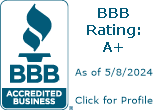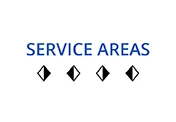Planning for a New Roof? Ask About These Different Types
You may have had your roof for a long time, but if it has reached the end of its life expectancy, the best option is to install a new roof. If you have had your roof for a long time, it’s important to know that roofing technology has improved significantly in recent years. Even if you’re constructing a new home for the first time, you’ll discover there are many options to choose from. As such, you might want to explore your residential roofing material options before investing. Be sure to consider the pros and cons of each option before making your decision. To help you out with your research, here are six roofing materials questions to ask when planning to install a new roof.
Asphalt Shingles
Asphalt shingles are the most common residential roofing material in the U.S., and according to Asphalt roofing.org, it’s found in more than 80% of American homes. Asphalt has been a popular building material for ages, and besides being used in paving, it’s also used as a common ingredient in manufacturing shingles. The structure of asphalt shingles is typically made up of two layers, the base/foundation, and the top layer. The base is usually fiberglass, while the second is the asphalt layer. Additionally, the shingles are coated in a layer of granules to create an attractive finish and improve durability.
There are two main options to choose from, which are the three-tab shingles and architectural shingles. Three-tab shingles are more common, and as the name suggests, they are one shingle designed to look like three tabs. On the other hand, architectural shingles have a lower part with an extra layer of asphalt, which helps add more visual appeal to your roof. The biggest benefit of asphalt shingles is that they are quite economical compared to other options on the market, like metal roofing and slate. Asphalt shingles are also effective at protecting your home from the elements, and according to Bob Vila, they can last between 15 and 30 years.
Additionally, shingles are quite attractive and unique. Given their popularity, they can also add resale value to your property. When shopping for a new asphalt roof, you get a wide variety of color and style options. You can even find shingles that mimic the look of tile, wood shakes, or slate, which just adds to the versatility. However, the biggest advantage is they are also the most affordable residential roofing materials. Hence, they’re the perfect option if your budget is limited. However, asphalt shingles have their own disadvantages. They are not environmentally friendly and often end up in landfills since they can’t be recycled. They’re also less durable, have less fire resistance, and have lower longevity than other options.
Metal Roofing
The technology behind metal roofing has continued to improve in the past year, and metal roofing is now a viable and mainstream option that homeowners can explore. The good news is that if you want the traditional look that asphalt offers, you can choose shingle-style roofing products with additional benefits. Metal roofs are no longer the corrugated things that were placed on barns. They’re also no longer a novelty to be used in unique-style, high-end homes. Instead, metal roofing is increasingly becoming the option of choice in many modern homes due to advanced manufacturing processes. According to Allied market research, the metal roofing market value was over $23 billion in 2020 and was set to increase to over $33 billion by 2030, translating to a CAGR growth rate of 3.5% between these years.
Metal roofs have many unique benefits over asphalt shingles. For instance, the material is so lightweight it can be installed over the existing roofing. It’s also easier to handle, so the installation costs won’t be too high because the process is less complicated. However, make sure that building codes allow it before installing a metal roof over an existing one. One misconception that can be construed as a disadvantage of metal roofs is that metal roofs increase the chances of your home being struck by lightning. This is simply not true, and there are no facts or statistics to support this. Instead, metal roofing doesn’t provide a direct path to the ground, so you don’t have to worry about your metal roofing attracting lightning.
The most significant benefit of metal roofing is that it’s highly durable. Metal roofs are resistant to fire, rot, insect damage, and impact. This explains why this type of roofing has excellent longevity and can last for 50 years or more, according to Bob Villa. Some metal roofs can last up to 100 years, depending on the material used. Additionally, metal roofs have a high emissivity value and solar reflectivity that greatly increases the overall energy efficiency of your home. It’s capable of reflecting the sun’s rays and emitting the heat energy it absorbs, thus keeping your home cooler. This reduces the burden on your HVAC system, which uses less power, so you can expect long-term energy savings. If you’re looking to shrink your carbon footprint, you’ll be pleased to know that metal roofs are eco-friendly because they can be recycled.
Metal roofing has a few downsides. It can be quite noisy when it rains, which is something that puts off many people. The good news is that your metal roof doesn’t have to be noisy if installed correctly over a solid substrate combined with the addition of insulation. This is enough to soundproof your home, and you can find that the metal roof isn’t any noisier than typical shingles. Another major downside of metal roofing is that it costs more to purchase. However, if you’re looking at the bigger picture, this type of roofing has a higher return on investment.
You can expect your roof to last for as long as you live in your home, and the durability and minimum maintenance requirements will help you save money in the long run. That said, severe hail can damage your metal roof by leaving dents and holes all over it. So, this type of residential roofing material is not completely indestructible and might not be suitable for regions where catastrophic hail is common.
Slate
If you’re looking for a high-end residential roofing option, then look no further than slate. Slate is a 100% natural roofing material composed of metamorphic stone, which offers a long list of benefits. Like metal roofs, slate is energy efficient because it prevents the transfer of heat into your home by releasing heat energy from the sun back into the environment. Slate has even better longevity and has been known to last a century or more, meaning this is an investment you make only once and can be enjoyed by many future generations. Slate is one of the best choices if you’re looking to improve your home’s resale value with a roof replacement. Slate is a sophisticated option that requires minimal maintenance and is recyclable, therefore, environmentally friendly.
The benefits of slate are certainly impressive, but you should know that slate is one of the most expensive options on the market. The cost increases because your roof will likely charge you a premium for the installation. The slate is heavy, which makes the installation complex. Not every roofer has the skills to install a slate roof, and not every home can support the extra weight. Additionally, while slate is very durable, it’s also subject to weathering, so the original color might start to fade, and soft, the natural slate will likely require regular repairs to maintain the integrity of your roof. That’s because soft slate is not as resilient as hard slate.
Wood Roofing
Wood has long been used in the construction of buildings, and if you’re interested in wood roofing, there are two main options to choose from. Shakes are more traditional and have a rustic aesthetic because they consist of blocks of wood that are not uniform in shape or size. On the other hand, shingles are not chopped by hand. Instead, the manufacturer uses a sawmill to produce wooden shakes that have a more uniform appearance. The top advantage of both wood shingles and shakes is that they’re an eco-friendly choice that significantly improves the curb appeal of your home.
Wood roofing is ideal if you’re looking for a sustainable residential roofing material that still performs well against high winds and hail damage. Since wood doesn’t conduct heat well and has great insulation properties, it helps lower your heating and cooling costs throughout the year. Although wooden roofs are not completely fireproof, they are treated with a fire retardant and are also resistant to the swelling and shrinking. However, wood roofing can be vulnerable to mold, termite damage, and rot. You’ll need to commit some time to meet the maintenance requirements of your roof to keep it in the best condition possible.
Clay and Concrete Roofs
When asking about the different residential roofing material options, you should also ask. “Are clay or concrete tiles right for me?” A clay tile roof is a good option that’s both classic and aesthetically pleasing. Clay tiles have a reputation for being super durable, and according to The Spruce, they have an average lifespan of 100 years. Clay roofs are not affected by rot or insect damage and require minimal maintenance. They are also good for the environment since they’re constructed from natural materials and can increase the overall energy efficiency of your home. The only major downside of clay tiles is they are more suitable for roofs with a sharp slope. They’re heavy and can be difficult to install.
You find that concrete roof tiles also share similar benefits. These tiles are made from a mixture of concrete and rock, which can withstand extreme weather conditions. Therefore, it’s not surprising that concrete roof tiles are extremely durable and highly resistant to weathering or fire. Additionally, concrete roof tiles are low maintenance and aesthetically pleasing, with many color and style choices to choose from. However, some people don’t choose this option because the tiles are heavy, and the installation cost can be high.
Solar and Green Roofs
Solar tiles are a relatively new residential roofing material, one that is designed to offer more energy savings than ever. Keep in mind that solar tiles are not the same as solar panels, although they also work to convert sunlight into energy that can power your home. Solar tiles have an aesthetically pleasing design and a sleek texture that can boost your home’s curb appeal. They’re also lightweight and easier to remove if you decide to move down the line. Overall, the advantages of solar panel roofs are that they are highly eco-friendly and can help dramatically lower your energy costs over time. The downsides are a higher upfront cost, lack of color variance, and other climate considerations preventing you from tapping into this power source.
Green roofing is also another roofing material that’s worth considering. According to Grandview Research, the demand for green roofs is set to increase by 17% between 2020 and 2027. Green roofs are suitable only for flat or slightly sloped roofs, and they involve planting vegetation over a waterproof system placed on your roof. The main benefits of green roofing are it reduces the overall heat conducted by buildings, and plants can also contribute to cleaner and fresher air. By adding a green roof, you can increase the value of your property significantly. However, green roofs are an expensive investment that requires regular maintenance. The added weight can also lead to roofing issues, such as sagging, while plant roots can damage the roof beneath.
These are the top residential roofing options worth knowing about. This article gives you some background information about each option, but if you want more detailed information, it’s worth speaking to a residential roofing expert. Use the combined information to narrow your options and purchase a new roof that best suits your needs. Take time to also research the best brands that offer quality roofing supplies and look for the best residential roofing contractors in your area to ensure a quality installation. That way, you can make the most of your investment and have a roof that lasts longer and protects your home adequately.
If you need high-quality residential roofing services, give Style Roofing, Inc a call today!











